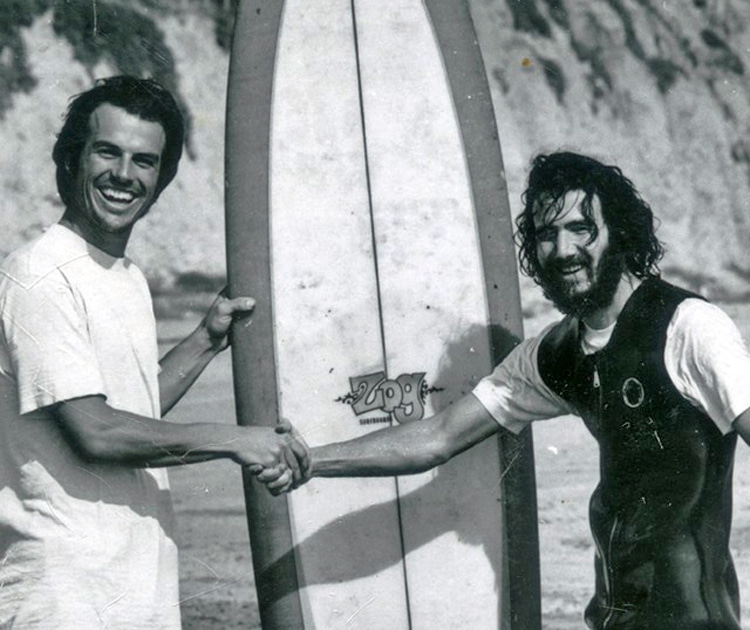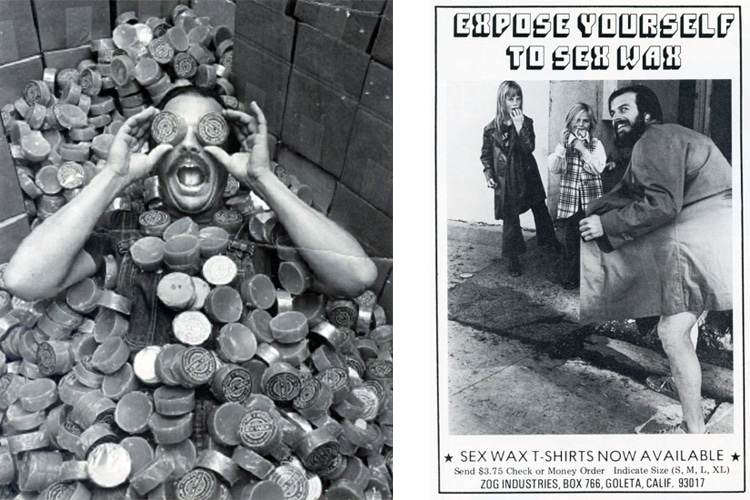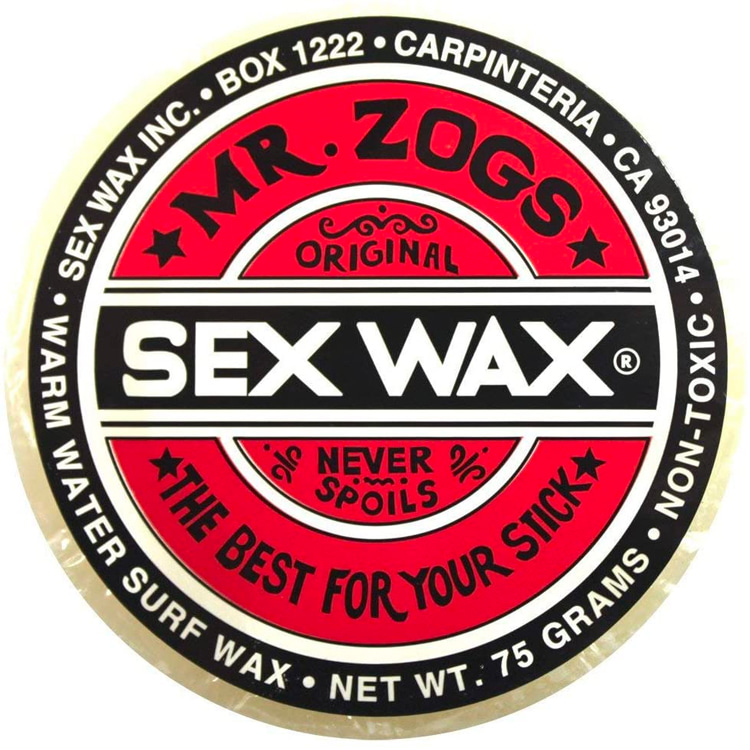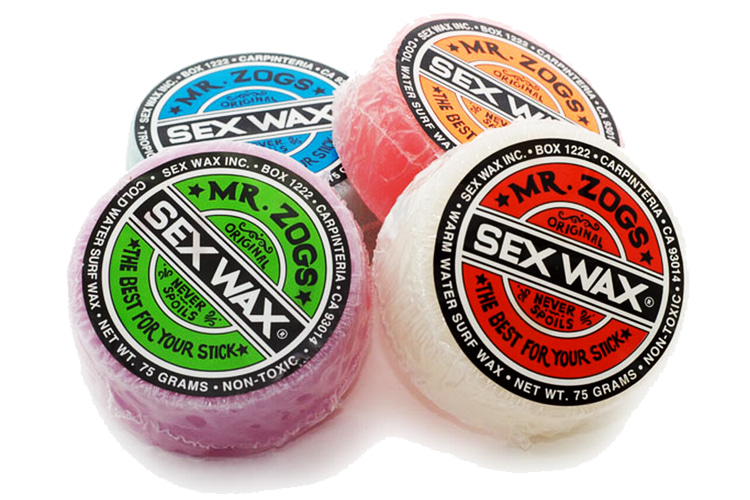Mr. Zog's Sex Wax is one of the most iconic surfboard wax brands in surfing's history. Here's how it got its unusual name.
Mr. Zog's Sex Wax is a surf company founded in 1972 by Frederick Charles Herzog III and his chemist partner Nate Skinner.
Herzog III was born in 1945 and grew up in Tustin, Oregon, ten miles northeast of Newport Beach and 40 miles southeast of Los Angeles, California.
In the early 1960s, he attended Tustin Union High School before working at The Skyway at Disneyland as a ride operator.
One day, Frederick spent $90 on his first Dale Velzy and Hap Jacobs balsawood surfboard and started surfing with friends at Orange County and San Diego County beaches.
He was one of the first wave riders to paddle out at Salt Creek Beach in Dana Point and also enjoyed Doheny State Beach and Trestles.
Later, Frederick Herzog purchased a semi-pig model from Wardy Surfboards. He was having the time of his life.
The teenager was enjoying the best California had to offer a surfer in the 1960s and partying to the sound of Dick Dale and His Del-Tones.

The Surf Shop Days
In 1969, after graduating from the University of California, Santa Barbara, with a degree in Economics, Herzog opened a surf shop in Goleta near the Santa Barbara Airport.
At his newly-established surf business, the entrepreneur also shaped his own collection of wave riding craft under the brands Zog Surfboards and Wave Delineation.
One of his working neighbors was Nate Skinner, a fully trained chemist and future professor at the University of California, Davis.
They started hanging out and talking and wondered if they could create a high-grip formula for the ultra-slippery surfboard decks.
At his "lab," and over a period of three to five months, Skinner developed several wax prototypes that Herzog would immediately put to the test.
But paraffin-based surf wax was still just a part-time hobby.
Further modifications and chemical fine-tuning took place over the following year until the duo was eventually pleased with the final formulation and specifications.
"Commercially available surf wax had been around since 1964," explains Matt Warshaw, author of "The Encyclopedia of Surfing."
"Herzog and Skinner saw a market opportunity in 1972 when Surf Research, the biggest wax-making company at the time, split apart."

The Controversial Name
Frederick and Nate's first surf wax was ready to be marketed.
But they needed a name and a logo, so Herzog asked his artist friend Hank Pitcher to design the product's original and inaugural label.
Pitcher had an epiphany and delivered the first sketch. And a controversial one - Sex Wax.
Why? The designer thought the name sounded fun, spicy, cool, and stuck in his mind.
But the "sex sells" advertising maxim was also taken into consideration. Herzog liked the idea.
The entrepreneur found it equally direct, striking, absurd, and thoughtfully provoking. Plus, the name referred to a recurring tempting taboo subject in capitalism and sales - sex.
"At first, I did not know what to think of it," Frederick Herzog later revealed.
"Initially, I felt the label was extremely strange and probably too controversial. After a few days of thought, I decided that being outrageous would be fun and consistent with my sarcastic nature."
Actually, Herzog embraced Pitcher's concept and went even further.
"In a 1974 surf magazine ad, beneath the slogan 'Expose Yourself to Sex Wax,' a grinning Herzog looks over his shoulder while he opens his trenchcoat to a pair of wide-eyed preadolescent girls," recalls Warshaw.
You couldn't probably do that today, and throughout the years, the founder of Mr. Zog's Sex Wax received all types of feedback.
There were people who were offended and refused to buy the product, confused customers, and those who appreciated and understood the light and inoffensive humor associated with the brand.
The original Sex Wax label featuring the sayings "Never Spoils" and "The Best for your Stick" remained untouched throughout the decades with its classic, old-fashioned feel.

The Goleta Factory
The original Sex Wax production center was a 400-square-foot garage rented from a friend for $20 a month.
The surfboard wax manufacturing process was relatively simple.
The duo poured paraffin wax, a softening agent oil solution, and one or more scent-producing chemicals into a 50-gallon barrel and then used a boat propeller to mix the ingredients.
The early wax molds were real old soup cans, but soon after, the company upscaled the operation and began using tuna fish cans.
When the wax formula was ready, the semi-liquid mixture was poured into the cans to get their final tobacco can-like shape.
They even built custom-made tall wooden cooling racks and an innovative wooden wrapping table.
In the end, the wax bar was wrapped in cellophane with an eye-catching round label.
And they smelled great - they were available in lemon, spearmint, banana, strawberry, and later pineapple, grape, and coconut, and several other aromatic fragrances.
From 1972 onward, Mr. Zog loaded his truck with hundreds of his Sex Wax bars and hit the road to spread the word and the innovative product.
Fredrick paid a visit to all the leading retailers from Santa Cruz to San Diego. Some were intrigued and cautious; others immediately ordered a few cases.
However, it was only a matter of months before the iconic surfboard wax brand was available in California's most famous surf shops.
To boost the business, two college friends invested $5,000 each in exchange for 5 percent in the company.
A couple of years later, Herzog repurchased the shares for double the price he had sold them; Nate Skinner kept his 15 percent in the company.
A Symbol of Surf Culture
The success of Mr. Zog's Sex Wax continued.
In 1975, Mr. Zog's moved the manufacturing facility to a single-unit, warehouse-style complex located in the heart of Goleta.
The company expanded its offer and launched a series of t-shirts featuring the (in)famous logo.
The clothing line sold by the tens of thousands in the 1970s and early 1980s was even banned from several schools and family amusement parks.
Strangely enough, in the early 1980s, the surf wax company was forced to add a "Do Not Ear or Chew" label disclaimer after hearing reports of a growing Sex Wax chewing trend among teenagers.
The surf wax company even made it to Hollywood.
In 1982, Jeff Spicoli (Sean Penn) wore a Sex Wax t-shirt in the comedy-drama blockbuster "Fast Times at Ridgemont High."
In 1991's "Point Break," the presence of the brand's wax at a crime scene tips off FBI agents that the group of bank robbers is comprised of surfers.
In 2015, a long-standing trademark dispute between Mr. Zog's Sex Wax and swimwear company Zoggs ended at the Supreme Court of New Zealand.
The California surfboard wax manufacturers won the legal battle.
Today, Mr. Zog's Sex Wax is probably one of the most famous surf wax brands on the planet, and it is available in all countries with rideable waves.
The firm sells three main types of surfboard wax: Original, Quick Humps, and Dream Cream Topcoats.
Each grip solution features several appropriate formula varieties based on water temperatures: cold water, cool water, warm water, and tropic water.
There's also Hockey Wax to coat hockey stick blades and Snowboard Wax to reduce friction between the board and the snow.
Furthermore, the Carpinteria-based company sells wax combs, scrapers and containers, surfboard racks and carriers, sunscreen, boardshorts, short and long sleeves, sweatshirts, tank tops, men's boxers, caps, air freshener, candles, key rings, decals, and stockings.
Frederick Herzog never stopped surfing. He and his wife have two children: Erick and Cody.
